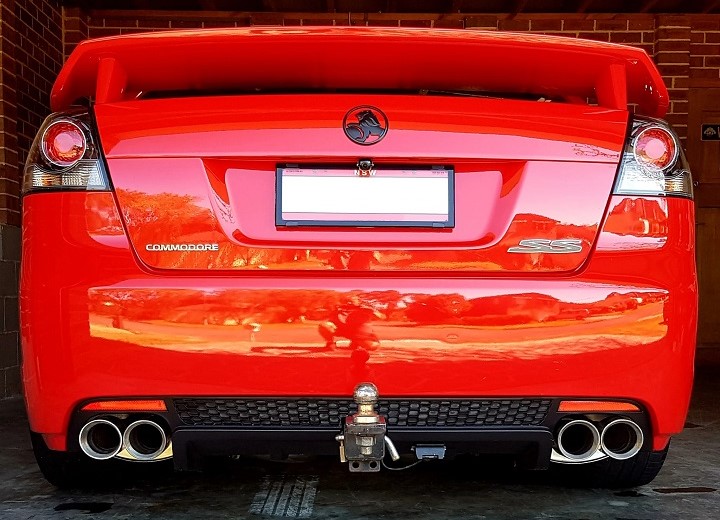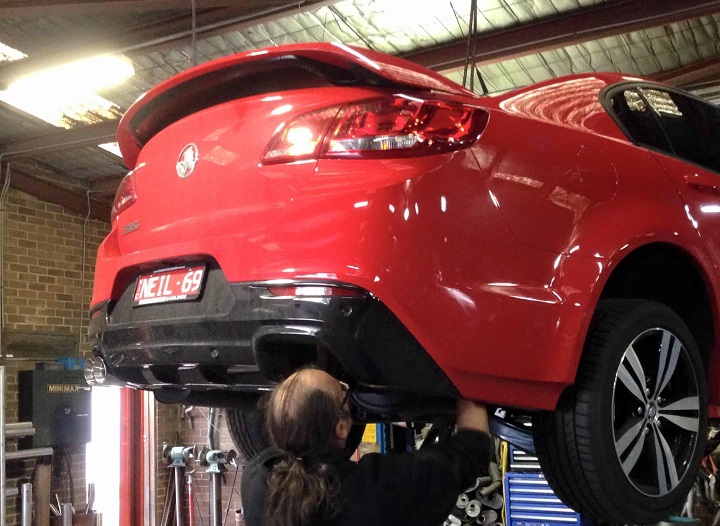A Comprehensive Guide to Holden Commodore VE Exhaust Systems
For enthusiasts of the Holden Commodore VE, one of Australia’s most iconic cars, there’s nothing quite like the roar of a powerful exhaust system. The VE series is celebrated for its performance, and a well-tailored exhaust system can enhance that power and produce a symphony of engine notes that thrill any car enthusiast. In this comprehensive guide, we will delve into the world of Holden Commodore VE exhaust systems. We’ll explore the various system types available, pipe size considerations, material options, and noise level choices to help you make an informed decision on how to transform your VE into a beast on the road.
Holden Commodore VE Exhaust Systems: The Heartbeat of Performance

The VE series, produced by Holden from 2006 to 2013, is a testament to Australian engineering and design. Known for its power and style, the VE Commodore has captured the hearts of car enthusiasts across the country. Upgrading your vehicle’s exhaust system can be a key factor in maximizing its performance and creating a distinctive engine sound.
The Significance of an Upgraded Exhaust System
An upgraded exhaust system is more than just a modification for aesthetics; it’s a fundamental improvement that enhances your car’s performance and auditory appeal. Here’s why a Holden Commodore VE exhaust system matters:
The Components of an Exhaust System
Before delving into the different types of exhaust systems available for your VE, it’s essential to understand the key components that make up the system:
- Exhaust Manifold: The manifold collects exhaust gases from the engine’s cylinders and directs them into the exhaust pipe.
- Catalytic Converter: The catalytic converter reduces harmful emissions by converting pollutants into less harmful gases. Some enthusiasts opt for high-flow catalytic converters for improved exhaust flow.
- Exhaust Pipe: The exhaust pipe carries gases from the manifold to the rear of the vehicle. The diameter and design of this pipe can significantly affect performance.
- Muffler: The muffler is designed to reduce exhaust noise. Upgrading to a performance muffler can change the sound of your vehicle.
- Resonator: Some exhaust systems include a resonator to further tune the exhaust note.
- Exhaust Tips: The exhaust tips are the visible part of the system, and they come in various styles. Larger tips can enhance the visual appeal of your vehicle.
Types of Exhaust Systems for the Holden Commodore VE

When considering an exhaust upgrade for your VE, you have several options to choose from. The main types include:
- Cat-Back Exhaust System: A cat-back system replaces components from the catalytic converter to the exhaust tips. This is a popular choice for those looking to improve performance and the exhaust note.
- Axle-Back Exhaust System: An axle-back system replaces components from the rear axle to the exhaust tips. It’s a cost-effective option that still offers performance and sound enhancements.
- Headers: Upgrading the headers involves replacing the stock exhaust manifold. Performance headers can enhance exhaust flow and power.
- Turbo-Back Exhaust System: Turbo-back systems are designed for turbocharged vehicles. They replace components from the turbocharger to the exhaust tips and can deliver substantial performance gains.
- Straight Pipe Exhaust: Some enthusiasts opt for a straight pipe exhaust, eliminating the muffler and resonator entirely for maximum performance and sound, although this may not comply with noise regulations in some areas.
Pipe Size Considerations
The size of the exhaust pipe can significantly affect your vehicle’s performance. The general rule is that a larger-diameter pipe allows for better exhaust flow, reducing back pressure, and enhancing power. However, there is a balance to strike, as excessively large pipes can negatively impact low-end torque. It’s crucial to consider your specific performance goals and engine modifications when selecting the right pipe size for your VE.
Material Options
The material used for your exhaust system is another important factor. The two most common materials for aftermarket exhaust systems are stainless steel and aluminized steel.
- Stainless Steel: Stainless steel is known for its durability and resistance to corrosion. It’s an excellent choice for those who want an exhaust system that can withstand the elements, making it perfect for Australian conditions. Stainless steel also has a polished appearance, which can enhance the visual appeal of your vehicle.
- Aluminised Steel: Aluminised steel is a more affordable alternative to stainless steel. It offers corrosion resistance to some extent, but not as much as stainless steel. Aluminised steel is still a good choice for those seeking an aftermarket exhaust system on a budget.
Noise Level Options
The sound of your exhaust system is a critical aspect of the upgrade. The noise level can range from mild to wild, and it largely depends on the type of muffler and resonator used. Here’s a breakdown of the options:
- Mild Sound: A mild sound option typically involves a chambered or turbo-style muffler. These mufflers offer a deeper, more subtle exhaust note, maintaining a degree of sophistication.
- Moderate Sound: A moderate sound is achieved with straight-through mufflers, such as a performance muffler. This option produces a more aggressive note without being overly loud.
- Aggressive Sound: If you’re looking for an aggressive sound that turns heads, you may opt for a straight pipe system or a high-performance muffler. These options produce a loud and throaty exhaust note that signifies your presence.
- Custom Sound: Many exhaust shops offer the option to customize your exhaust system’s sound. This allows you to fine-tune the noise level to your exact preferences.
Professional Installation and Tuning

While some car enthusiasts may have the skills to install their aftermarket exhaust systems, professional installation is recommended for many. Professional mechanics can ensure that the components are correctly fitted, providing maximum performance while minimizing the risk of leaks or other issues. Additionally, tuning the exhaust system is often needed to achieve the desired performance and sound.
Maintenance and Care
To keep your upgraded VE exhaust system performing optimally and sounding great, consider the following maintenance tips:
- Regular Inspection: Periodically inspect the exhaust system for signs of damage, leaks, or corrosion. Address any issues promptly.
- Cleaning and Polishing: Clean and polish the visible parts of the exhaust system, such as the tips, to maintain their appearance.
- Professional Maintenance: Seek the assistance of a professional mechanic with experience in aftermarket exhaust systems for complex repairs or tuning.
- Compliance: Ensure that your exhaust system complies with local regulations to avoid potential legal issues.
Conclusion
Upgrading the exhaust system of your Holden Commodore VE is a thrilling journey that can unleash hidden power and create a unique auditory experience. Whether you seek enhanced performance, a distinctive exhaust note, or improved aesthetics, aftermarket exhaust systems offer a range of benefits that can transform your VE into a true performer. However, it’s essential to approach these upgrades thoughtfully, considering your performance goals, budget, and sound preferences.
With the right selection of exhaust components and professional installation, you can revel in the thrill of your VE’s new power and sound, truly unleashing the beast that lies within this iconic Australian car. So, if you’re ready to elevate your driving experience to the next level, the world of Holden Commodore VE exhaust systems is waiting to provide the ride of a lifetime.
